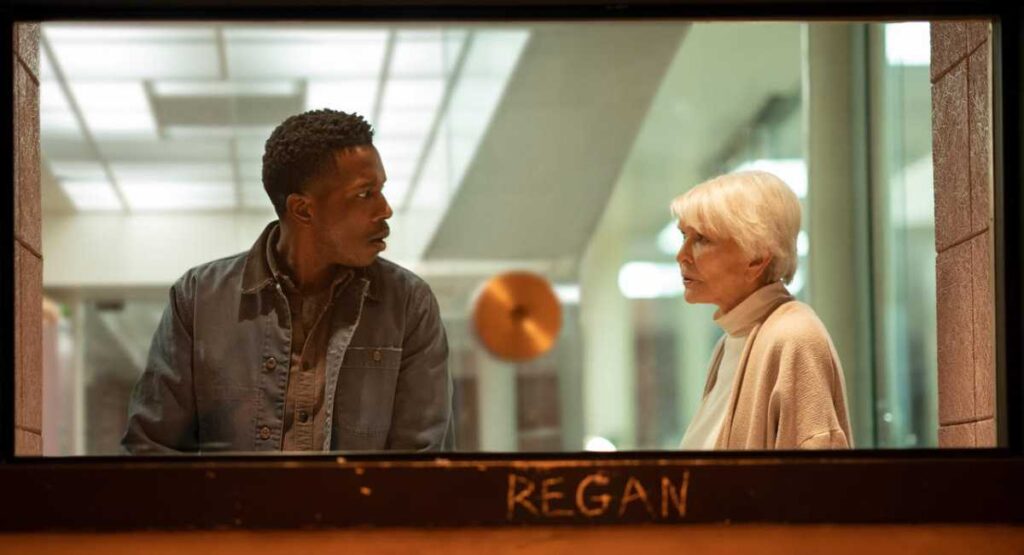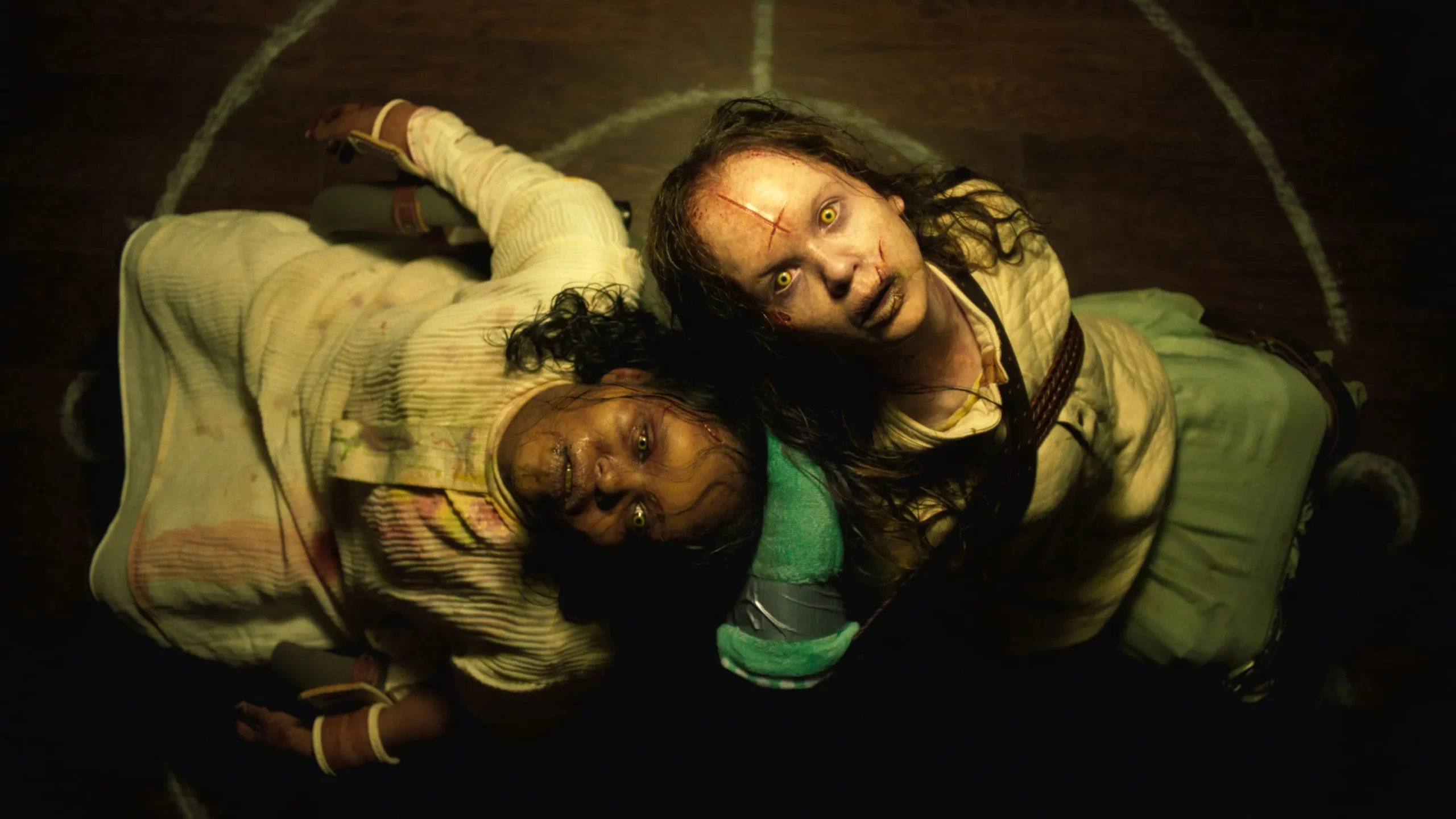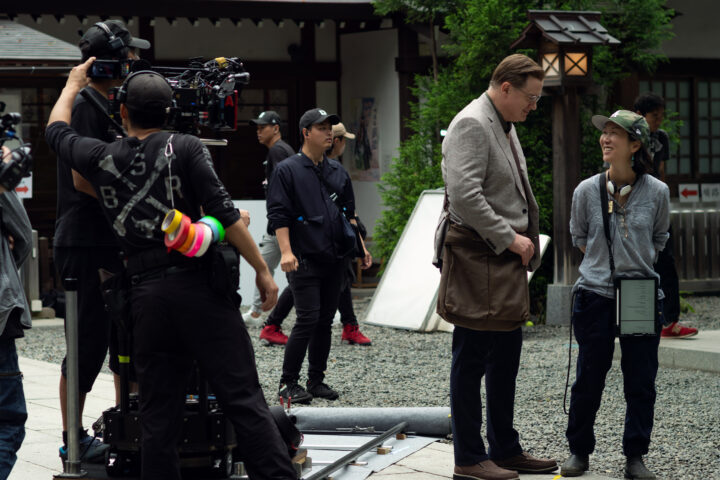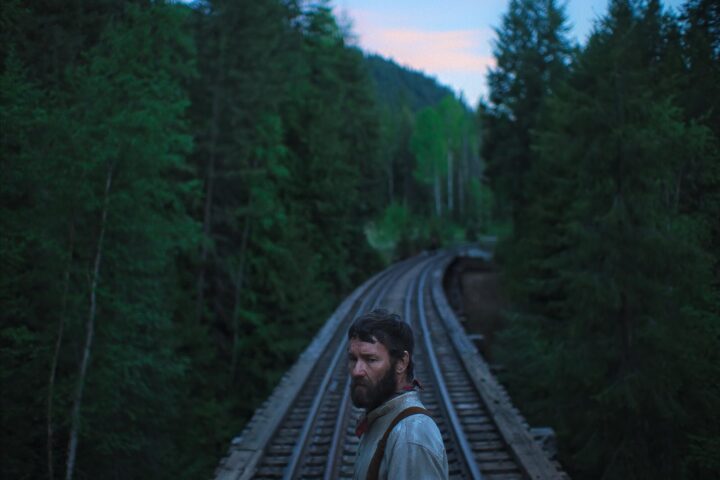The Exorcist: Believer takes an earnest shot at updating a shopworn franchise that has not been good in a half-century. While it has a few things going for it, none of them, unfortunately, are in the horror department. The film is competently made with solid performances, but it lacks the requisite ability to send shivers down your spine or make you ponder its deeper implications.
In its tale of a pair of bedeviled adolescent girls, it checks off the requisite boxes—distraught parents, befuddled medical professionals, slickly gory special effects, rudimentary call backs to William Friedkin’s landmark original and, of course, an exorcism—yet somehow it is neither involving nor frightening. It may be that in 2023 we have seen everything the exorcism genre has to offer in its now-familiar tropes of fallen priests, contorting victims spewing guttural tongued profanity, levitational special effects, ad nauseum.
The same was not true in 1973 when The Exorcist was released to unsuspecting hordes of holiday moviegoers traumatized by the picture’s seminal imagery, which included visions of the demonic, spectral vomit, rotating heads and, in a scene that retains the power to still provoke fifty years later, genital desecration by crucifix.
One of the greatest films of its era and the most frightening, The Exorcist remains a singular emotional and visceral experience. The public reaction was convulsive, both to the picture’s cavalcade of shock images and serious contemplation of faith and the loss of it, and the plausibility of a consuming evil intrusion bent on the destruction of innocence, family and belief (which just might lose in such a primal confrontation).
But today, after decades of movie slashers, supernatural entities and all manner of screen nihilism rendered in digital sophistication, our reaction to horror pictures, a new one cropping up every week, is much different: no longer are we able to be surprised. Conversely, we now sit in bold, delighted expectation of the gruesome, the diabolical and the extreme (see last week’s lurid torture of Saw X).
While in the moviegoing culture of 1973 The Exorcist may have been received as shockingly transgressive and, for some, offensive, in 2023 horror film fans long to be offended, craving such shocks, served up weekly as part and parcel of a good old time at the multiplex. Yet while the empty and easy jump scares are plentiful today, the disturbing factor—the hard part of genuinely unnerving the viewer—is nearly wholly absent.

This brings us co-writer and director David Gordon Green, who in The Exorcist: Believer returns to the notion of a child’s agency claimed by a demon and the helpless parents who must turn to unorthodox means of rescue. It is well-produced, shot and fairly professionally made. Yet despite three good performances, it sits there on the screen going through a series of tired, expected motions without scaring us or making us think.
Picture opens well enough in a Haiti-set prologue where a young married couple (Leslie Odom, Jr., Tracey Graves) experience an earthquake. She is pregnant but killed while the baby survives, and he goes onto raise the child alone. Flash forward thirteen years and Victor (Odom, Jr.) is a single dad to budding teen Angela (Lydia Jewett), who disappears after school with best friend Katherine (Olivia Marcum). After a three-day manhunt the girls appear in a barn some thirty miles away with no recollection of where they have been or how they got there. Both girls are disoriented, and their feet appear burned. Uh-oh.
Because we are way ahead of the characters onscreen we know the girls are possessed and will eventually require an exorcism (or there would be no film) so most of The Exorcist: Believer concerns watching Victor and Katherine’s parents (Norbert Leo Butz, Jennifer Nettles) go through the motions of shock, disbelief and acceptance of the supernatural as their daughters exhibit the usual outrageous behaviors in and out of hospitals, consulting the church, etc.
A measure of elegance in the form of Ellen Burstyn, reprising her Oscar-nominated role as beleaguered mom Chris MacNeil, is introduced in the picture’s second half as exasperated Victor—who of course has lost faith—consults the former actress and mom to Regan, now turned best-selling author and possession expert, for last ditch counsel. While Burstyn gets an initial scene of exposition that belongs in a better film, what Green ultimately does with her character is inexplicable in two regards. If you hire Ellen Burstyn, who for years rejected a return to the series (but apparently said yes here to fund an acting scholarship for students), you don’t subject her to gratuitous violence and victim status. It’s a missed opportunity to fully utilize an iconic star.
The venerable and always welcome character actress Ann Dowd turns up as the film’s MVP, a kindly neighbor who also just happens to be the local hospital nurse and, wouldn’t you know it, a fallen Catholic novitiate who knows “how to do a Roman Catholic exorcism.” Add that to the skills you never knew you’d need but are glad your neighbor has at the ready.

The talented Odom, Jr., the Tony-winning Hamilton alum who played Sam Cooke in One Night in Miami, is saddled with a redux Burstyn role, a modern-day set upon parent whose character is defined by little other than the actor’s conviction. That he manages a genuine performance is a testament to his ability to rise substantially above the material.
The rest of The Exorcist: Believer includes generic parents, an underwritten, insecure young priest (E.J. Bonilla), a bored-looking Baptist minister (80s star Raphael Sbarge) and the late arrival of a seemingly important character named Dr. Beehibe (a solid Okwui Okpokwasili), an African priestess who uses “rootwork” healing techniques. Imagine all of these characters in a room with two wildly possesed young girls, crafting a sort of prayer circle to defeat the demon. This is exorcism as support group, far afield from the theological and spiritual confrontations faced by the original’s Father Karras and Father Merrin, flawed foils for evil.
Co-written by Green and Peter Sattler from a story by Green, Scott Teems and Danny McBride, the movie, produced by the shockmeisters at Blumhouse, is calculated to exploit the horror and backseat the human drama. In retrospect, the 1973 original, which provided a good hour of character before hell broke loose, did exactly the opposite. Consequently, the characters in The Exorcist: Believer feel secondary to the plot, saved only by the actors’ talents.
Along the way there is more “pea soup” vomit, the usual vulgar, taunting possession scenes, numerous obligatory ruminations on faith and admittedly professional production design and cinematography (which keep the movie watchable).
Yet like the director’s 2018 Halloween reboot, The Exorcist: Believer dials down the reasons to care, which Green’s predecessors understood: the people. In Halloween, Green clearly saw Michael Myers as a nonstop killing machine across an assembly line of victims, but the reason John Carpenter’s 1978 original worked so beautifully (before spawning a plethora of cheap sequels) was because we liked the people, namely a game Jamie Lee Curtis. This time, Green de-emphasizes the parental helplessness and potential loss of a child, doubling down with two possession victims in a bigger-is-better miscalculation. Strangely, we barely get to know either girl in any meaningful way. Seemingly insecure in the notion of possession to frighten 2023 audiences, Green also peppers the film with jump scares and loud music cues.
The Exorcist: Believer attempts to breathe new life into a long-dead franchise, but unfortunately, it can’t seem to find its scare factor, even with a checklist of horror clichés. Perhaps the once-shocking exorcism genre has lost its capacity to genuinely unnerve us. The picture is simply not scary and its treatment of the regal Burstyn is its greatest evil.
2 stars




Very enjoyable review. I wish I was knowledgeable enough to understand all the references.